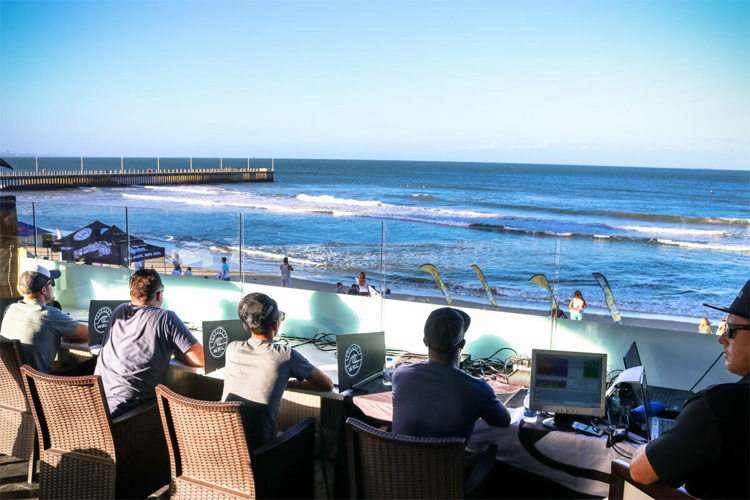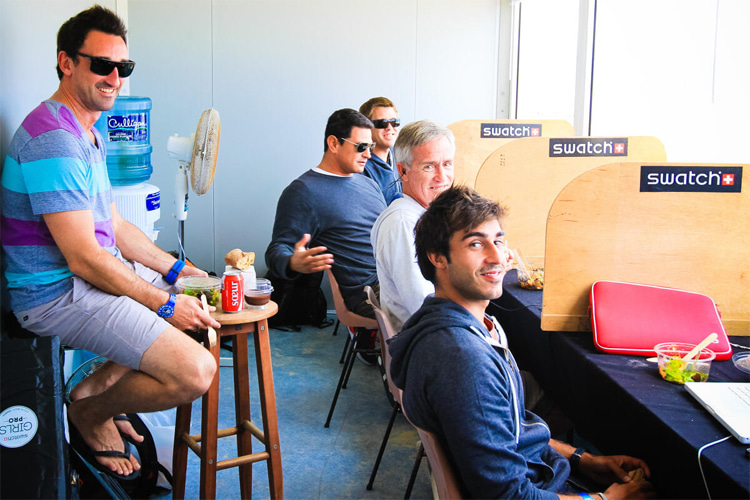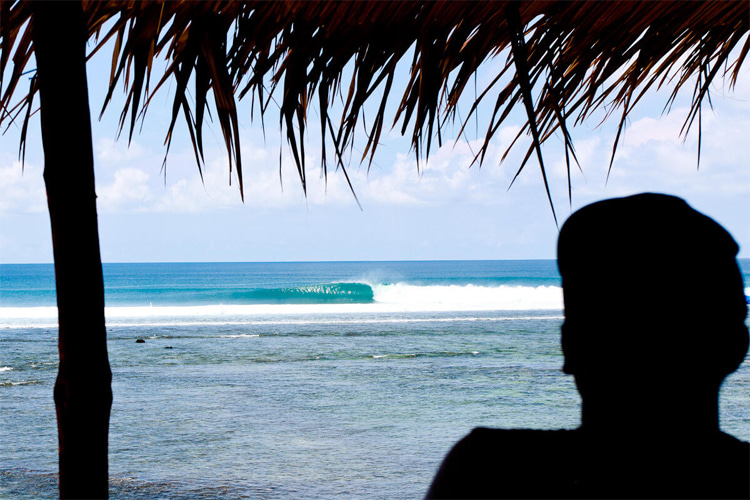A contribution to the improvement of fairness in surf judging

Nothing fuels more controversy in and outside the water than awarding scores for waves ridden in competitive surfing.
Whether a surfer wins or loses their heat by a narrow margin, there’s always someone unhappy with the judging.
It could be the athletes themselves, the fans, the beach spectators, online viewers, the sponsors, the coaches, or the surfers’ families.
The ultimate goal of professional surfing judges is to be objective in a subjective sports performance.
It’s a paradox – trying to be rational and analytical in an activity that is, by nature, non-mathematical and led by non-linear variables like originality, creativity, fluidity, etc.
It’s like judging an art competition.
That said, there will always be someone with a different opinion on how to score a critical, one-maneuver-only, and a multiple-turn ride.
Which one deserves a higher score? How do you compare degrees of difficulty in similarly ridden waves?
If we exclude the conspiracy theories that support the idea that the World Surf League (WSL) and its judges either:
- Benefit surfers competing in their home waters;
- Favor a balanced list of winning nationalities;
- Back either veteran, wildcards, up-and-coming surfers;
- Try to postpone the crowning of world champions;
- Purposedly harm someone’s scoreboard;
- Push athletes backed by the event’s sponsor;
- Or subconsciously favor the popular surfers;
If we can get past these misconceptions, we must accept that in order to get surf contests going and enjoy watching two or three surfers competing for a trophy or title, we must have humans evaluating humans based on predefined criteria.
If we cannot accept that surf judges can get it right most of the time and occasionally make mistakes, then the only thing we should do is refrain from watching them in action.

Comparing Waves
A surf judging panel has several tools and methods for ensuring each score thrown is as fair as possible.
One of these tools is video.
The WSL video replay system allows judges to examine details in finer detail by showing two waves ridden by two contestants side by side on screen.
Often, two ridden waves raise doubts in the judging booth.
At first glance, one of these waves could very well be over or underscored, especially when there’s an identical ride afterward.
These doubts generate conflicts and anger.
The last thing a competitive sports organization needs is distrust from the fans and the athletes.
That is why the surf judging criteria and the official rulebook should always be a work in progress.
Any minor detail that can help us get near bulletproof scoreboards is welcome.

Should Wave Selection Count? The Bull Riding Format
Controversial heats spark a lot of debate and exchange of views.
Apart from the heated arguments – some of them too nationalistic to deserve to be highlighted – there are always insightful contributions.
One of the most referred to is the need to put more emphasis on wave selection.
Should an air reverse be judged similarly on a small and bigger wave? Can a last-second effort on a mushy wave overturn a heat?
Some fans believe waves pro surfers paddle into should also be scored.
Let’s take the example of Professional Bull Riders (PBR).
Professional bull riding is judged by two judges who observe both the rider and the bull, scoring them individually on their performance.
The rider is scored from 0 to 25, as is the bull, resulting in a combined total score with a maximum of 100 points.
During the ride, the rider must keep one hand, called the free arm, in the air for at least eight seconds, with any slapping resulting in a no score.
Judges assess the rider’s balance, control, and synchronization with the bull, awarding extra points if the rider spurs the bull to encourage more intense bucking.
Stock points contribute to the total score and are determined by the difficulty of the bull’s performance.
Bulls that exhibit agile, dynamic movements, such as spinning and bucking close to the chute gates, score higher than those with simpler movements.
Judges evaluate the bull’s style, agility, speed, and the raw power that can quickly dislodge a rider.
Unlike in acrobatics or wave pools, where the floor and the waves are constant variables equally available for everyone, ocean surfing relies on the quality of the waves.
By putting more emphasis on rewarding wave selection, judges could increase the dilution of minor judging “mistakes” and optimize the fairness, accuracy, and quality of the scoreboard.
In the end, more variables would translate into better judgments.

Averaging the Highest Three Waves
So, if more judging variables improve the quality of the evaluation, could a scoreboard based on the best three waves better reflect a surfer’s performance?
The truth is that the three-wave scoring system is not new. The ASP World Tour (1983-2014) had it in place until 2002.
Actually, Shane Beschen is the only surfer in history to have scored a Perfect 30.
In 1996, at the Billabong Kirra Pro, the San Clemente regular footer rode three Perfect 10-point waves in a Round 3 heat against Brazilian powerhouse Fábio Gouveia.
One reason the highest three-wave format was replaced by the two-wave scores was to increase and put pressure on performance.
The fewer the tallied waves, the more athletes must surf to get an excellent total score. Simultaneously, it is thought to increase competitiveness and change places throughout the heat.
Is there a way that has never been tried? What about averaging the best three (or four) waves?
If you increase the number of waves scored and then take the average of all the waves scored, you’ll find the winner based on the overall performance in a heat.
Publicly Detailing Event Judging Criteria
There is one more thing we could do to increase the transparency of judging criteria.
As we all know, the formula for judging heats varies slightly from one event to another based on the type of wave and conditions on offer.
At Pipeline, judges want to see deep barreling rides; at Lower Trestles, they want to see all-around surfing with a mix of rail-to-rail and aerial performances.
However, fans at home and at the beach are not always reminded of that.
There should be an extra effort to communicate the judges’ requirements for the day or a particular heat.
They should publicly disclose, in more detail, what exactly they need to see from the surfers to award high scores.
Will roundhouse cutbacks be favored over floaters? Will air reverse maneuvers score more than frontside or backside snaps?
Does a combination of barrels and airs top everything else? What exactly can a surfer do to get a Perfect 10?
Last but not least, should a judge from country X be throwing scores at a surfer from country X?
Should a judge from country Y award scores in a potential world title heat involving a surfer from country Z, knowing if eventual implications in another potential world title heat involving a surfer from his country?
As with everything in life, common sense should prevail, and there’s definitely room for improvement and fine-tuning.
Words by Luís MP | Founder of SurferToday.com



